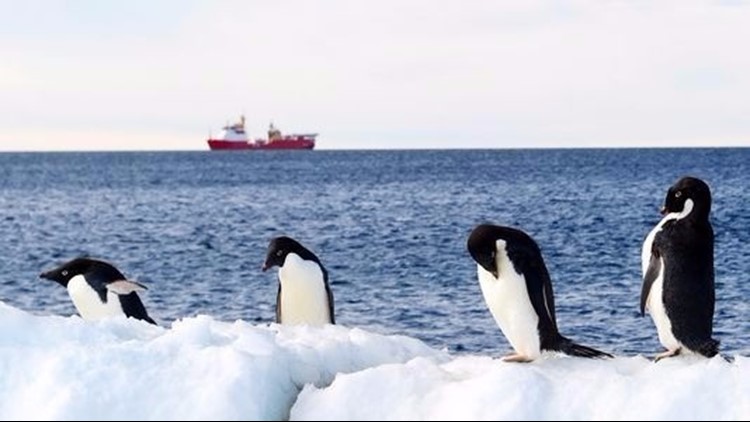The continent of Antarctica officially has a new record high temperature of 63.5 degrees, scientists from the World Meteorological Organization (WMO) announced Wednesday.
The record was set on March 24, 2015, at the Argentine Research Base Esperanza, located near the northern tip of the Antarctic Peninsula. It replaces the previous record of 59 degrees at Vanda Station, Antarctica, on Jan. 5, 1974.
It's not uncommon for world weather and climate records to take years to verify. In addition to checking the meteorological data and accuracy of weather stations, scientists also needed to define the three Antarctic regions, said Randall Cerveny, chief rapporteur of climate and weather extremes for the WMO.
Thus, while the record for the Antarctic continent is 63.5 degrees, Cerveny said the record for the entire Antarctic Region is 67.6 degrees, which was set on tiny Signy Island in January 1982. The Antarctic Region is defined by the United Nations and the WMO as all land and ice south of 60 degrees south latitude. Signy Island is in the South Orkney Islands.
Scientists defined yet another category — the high-elevation Antarctic Plateau — which set its own record high of 19.4 degrees on Dec. 28, 1989, at an automated weather station.
Verifying all of these extremes is important in the study of weather patterns, naturally occurring climate variability and human-induced climate change, the WMO said in a statement.
“This investigation highlights the need to continually monitor all of the Antarctic Region is ensure that we have the best possible data for climate change analysis at both the regional and global scales,” Cerveny said.
The WMO maintains an archive of weather and climate extremes, which includes the world’s highest and lowest temperatures, rainfall, heaviest hailstone, longest dry period, maximum wind gust, longest lightning flash and highest significant wave height.
The world's lowest temperature remains the same: A nippy 128.6 degrees below zero, set at the Soviet Union's Vostok Station in Antarctica on July 21, 1983.
Wednesday's announcement appeared in Eos, a publication of the American Geophysical Union.





